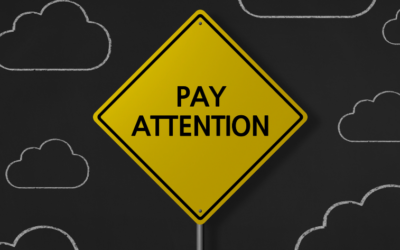Effective sales communication is essential for any successful salesperson. Whether you are dealing with prospective clients, existing customers, or colleagues within your organization, your ability to communicate clearly and persuasively can make or break a deal. In this article, we will explore various tips and techniques to help you master the art of sales communication.
Understanding the Importance of Effective Sales Communication
Before delving into the techniques, it's crucial to understand why sales communication is so important. Communication is pivotal in sales because it is the primary means of building relationships, understanding customer needs, and conveying the value of your products or services.
Effective sales communication goes beyond simply relaying information. It is about connecting with your audience on a deeper level, establishing trust, and creating a lasting impression. When done right, it can increase sales, customer loyalty, and a strong brand reputation.
The Role of Communication in Sales
Communication is the backbone of any successful sales process. It allows you to demonstrate your expertise, build trust with potential clients, and deliver persuasive messages that resonate with their needs and desires. Effective communication empowers you to convey the unique value proposition of your products or services and differentiate yourself from the competition.
Imagine a scenario where a potential client is considering multiple options. The way you communicate can be the deciding factor in whether they choose your product or service over others. You can sway their decision in your favor by effectively articulating the benefits and addressing any concerns.
Key Elements of Successful Sales Communication
Several key elements characterize successful sales communication. First and foremost, it requires active listening. By attentively listening to your customers, you can identify their pain points and tailor your message accordingly. This not only shows that you value their input but also allows you to provide personalized solutions that meet their specific needs.
In addition to active listening, empathy and genuine interest in your customers' concerns helps establish rapport and build trust. Customers who feel understood and valued are more likely to engage with you and consider your recommendations.
Another critical element is clarity. Your message should be concise, compelling, and easy to understand. Avoid using jargon or complex terminology that may confuse your audience. Instead, focus on delivering a clear and concise value proposition that addresses their needs and presents your solution as the ideal choice.
Furthermore, adaptability is essential in sales communication. Different clients have distinct communication styles and preferences. By adapting your approach to match theirs, you can establish better connections and improve your chances of success. This may involve adjusting your tone, language, or communication medium to suit your preferences.
Lastly, effective sales communication requires continuous improvement. It's essential to evaluate your communication strategies regularly, seek customer feedback, and refine your approach. By staying open to learning and adapting, you can stay ahead of the competition and ensure that your communication remains impactful and relevant.
Enhancing Your Verbal Sales Communication Skills
In sales, verbal communication skills are paramount. Here are some techniques to help you enhance your skills in this area:
The Art of Persuasive Speaking
Persuasive speaking is a crucial skill that can significantly impact your sales success. To become a more compelling speaker, focus on clearly articulating the benefits of your products or services, appealing to your audience's emotions, and presenting real-life examples of satisfied customers who have benefited from your offerings.
When articulating the benefits of your products or services, it is essential to highlight how they can solve a problem or fulfill a need for your customers. By clearly explaining how your offerings can improve their lives or businesses, you can create a sense of urgency and desire in your audience.
Appealing to your audience's emotions is another powerful, persuasive speaking technique. By tapping into their feelings, you can create a connection and make your message more memorable. You can use storytelling techniques to evoke emotions such as joy, fear, or excitement, depending on the desired outcome of your sales pitch.
Presenting real-life examples of satisfied customers who have benefited from your offerings adds credibility to your sales pitch. People are more likely to trust and believe in a product or service if they see that others have had positive experiences. Sharing testimonials or case studies can help you build trust and demonstrate the value of what you are offering.
Active Listening in Sales
Active listening is the foundation of effective sales communication. You can uncover their needs, concerns, and objections by actively listening to your customers. This information allows you to respond appropriately and address their pain points, increasing the likelihood of closing the sale. Remember, listening is not just hearing; it requires paying attention and showing genuine interest.
When practicing active listening, giving your full attention to the customer is essential. Avoid distractions and focus on what they are saying. Show genuine interest by maintaining eye contact, nodding, and using verbal cues to indicate you are actively engaged.
As you listen to your customers, uncover their needs and concerns. Ask open-ended questions to encourage them to share more information and provide you with valuable insights. By understanding their pain points, you can tailor your sales pitch to address their specific needs and position your offerings as the solution they have been looking for.
Addressing objections is another crucial aspect of active listening in sales. When a customer raises a concern or objection, listen carefully and acknowledge their point of view. Instead of dismissing their concerns, take the time to understand their perspective and provide thoughtful responses. This shows that you value their opinion and will work with them to find a solution.
Enhancing your verbal sales communication skills requires mastering the art of persuasive speaking and practicing active listening. You can become a more persuasive speaker by effectively articulating the benefits of your offerings, appealing to your audience's emotions, and presenting real-life examples of satisfied customers. Additionally, by actively listening to your customers, uncovering their needs and concerns, and addressing their objections, you can build trust and increase your chances of closing the sale.

Improving Non-Verbal Sales Communication
Non-verbal communication is just as important as verbal communication in sales. It plays a crucial role in conveying messages, building rapport, and establishing customer trust. Here are some ways to enhance your non-verbal communication skills:
The Power of Body Language
Your body language can convey a wealth of information to your customers. It is a powerful tool that enhances or undermines your sales efforts. When engaging with prospects, it is essential to maintain eye contact as it demonstrates attentiveness and interest. Additionally, standing or sitting up straight portrays confidence and professionalism, making you appear more credible and trustworthy.
Open gestures are another aspect of body language that can positively impact your sales communication. You create an inviting and approachable presence by using open gestures, such as keeping your arms at your sides or using expansive hand movements. Conversely, crossing your arms or exhibiting defensive postures can create barriers between you and your prospect, hindering effective communication.
Utilizing Facial Expressions and Gestures
Facial expressions and gestures can add emphasis and impact to your verbal messages. They provide visual cues that help convey emotions, intentions, and attitudes. By using appropriate facial expressions and hand gestures, you can enhance the meaning of your words and make your communication more engaging and persuasive.
For example, a warm smile can help establish a positive connection with your audience. It conveys friendliness, approachability, and a genuine interest in their needs. Smiling can create a comfortable and welcoming environment, making it easier for prospects to trust and engage with you.
In addition to facial expressions, hand gestures can also play a significant role in non-verbal sales communication. They can emphasize key points, illustrate concepts, and add energy to your presentation. For instance, when discussing the benefits of your product or service, you can use hand gestures to demonstrate size, shape, or movement, making your message more vivid and memorable.
Furthermore, nodding in agreement can be a powerful non-verbal cue. It shows that you are actively listening and understanding your prospect's perspective. Nodding conveys empathy and respect, fostering a sense of connection and collaboration. Acknowledging and valuing their viewpoints can build rapport and strengthen customer relationships.
Remember, non-verbal communication is not limited to body language, facial expressions, and gestures alone. Other factors, such as tone of voice, personal space, and appearance, also contribute to your non-verbal message. Paying attention to these details and continuously refining your non-verbal communication skills can significantly enhance sales effectiveness.
Mastering Written Sales Communication
While verbal and non-verbal communication are crucial, written communication also plays a significant role in sales. Mastering the art of written sales communication can significantly enhance your ability to connect with potential customers and close deals. Here are some valuable tips to help you become a master of written sales communication:
Crafting Compelling Sales Emails
Writing effective sales emails requires attention to detail and persuasive writing skills. When composing an email, it's important to personalize it to address the recipient by name. This simple act shows that you have taken the time to understand and acknowledge the individual you are reaching out to. Additionally, using a conversational tone can create a sense of familiarity and make your email more engaging.
Clarity is critical when it comes to the content of your sales email. Clearly state the purpose of your email right from the beginning so the recipient knows what to expect. Highlight the value of your offering and explain how it can benefit the recipient specifically. By addressing their pain points and demonstrating how your product or service can solve their problems, you can capture their interest and make a compelling case for why they should choose you.
Furthermore, including a solid call to action is essential. A call-to-action prompts the recipient to take the desired action, whether scheduling a meeting, requesting more information, or purchasing. Make sure your call-to-action is clear, concise, and easy to follow. Providing a clear next step makes it easier for the recipient to respond and move forward in the sales process.
Effective Use of Sales Collateral
In addition to sales emails, collateral such as brochures and presentations can be powerful tools in your sales arsenal. When creating sales collateral, it's important to remember that visual appeal matters. A visually appealing brochure or presentation can capture your audience's attention and make a lasting impression.
One effective way to make your sales collateral visually appealing is by using attention-grabbing headlines. A compelling headline can draw readers in and make them want to learn more. Using bullet points can also help you communicate your key messages concisely and effectively. Breaking down information into digestible chunks makes it easier for your audience to understand and retain the information you are presenting.
Furthermore, incorporating visuals into your sales collateral can significantly enhance its impact. Whether high-quality images, infographics, or charts, visuals can help illustrate your points and make your message more memorable. Visuals can also make complex information more accessible, allowing your audience to grasp the benefits of your products or services more efficiently.
Mastering written sales communication is a valuable skill that can significantly contribute to your success in sales. By crafting compelling sales emails and effectively using sales collateral, you can connect with potential customers, convey the value of your offerings, and ultimately increase your chances of closing deals. So, take the time to hone your writing skills and make every word count in your sales communication efforts.

Leveraging Technology for Sales Communication
With advancements in technology, sales communication has expanded beyond traditional methods. Here's how you can leverage technology to enhance your sales communication:
Sales Communication in the Digital Age
Utilize digital channels such as email, social media, and video conferencing to connect with your audience. However, maintain a personalized approach and ensure your digital communications reflect the same level of professionalism and attention to detail as traditional methods.
Utilizing CRM Tools for Better Communication
Customer Relationship Management (CRM) tools can streamline your sales communication processes. Use CRM software to organize customer data, track interactions, and automate follow-ups. This lets you stay organized, provide timely responses, and maintain effective communication throughout the sales cycle.
Mastering sales communication can significantly enhance your sales performance and build lasting relationships with your clients. Incorporate these tips and techniques into your sales approach and watch your success soar.
Explore the Path to Success with CorEthos
Thank you for journeying with us through this exploration of ideas. Your presence here is a testament to a shared passion for reimagining business, and it resonates with the essence of CorEthos: bringing humanity back to business.
Perhaps the curiosity that brought you here still burns brightly, yearning for further discovery. In that case, we invite you to delve into our blog, where each article opens new doors to understanding, insight, and growth. They are tailored to leaders like you, eager to unravel the complex tapestry of today's business world.
If you find yourself intrigued by the delicate science behind communication and leadership, why not embark on a journey of discovery with our newsletter? Subscribing is like opening a treasure chest filled with wisdom that connects you to the essence of collaboration and community.
Intensify Your Leadership Journey with Our Mastermind Program
Our newly launched Mastermind Program provides a focused setting for tackling challenges like honing effectiveness, inspiring your team, and mastering the art of delegation. It's a unique space where business acumen meets human-centered values, delivered with the same quality and integrity you expect from CorEthos. Ready to dive deeper into your leadership potential?
We Would Love to Get to Know Your Challenges Better!
Challenges in business? We see them not as stumbling blocks but as opportunities for transformation. Your unique path awaits, beginning with a complimentary consultation with CorEthos. We'll build bridges over obstacles and forge a trail to success, leveraging our three foundational pillars.
Your adventure with CorEthos doesn't have to end here. Let's continue to build, learn, and grow together, reflecting on what makes your business uniquely human. We are your compass, guiding you through the challenges and celebrating the triumphs. Let's begin this exciting journey today.



